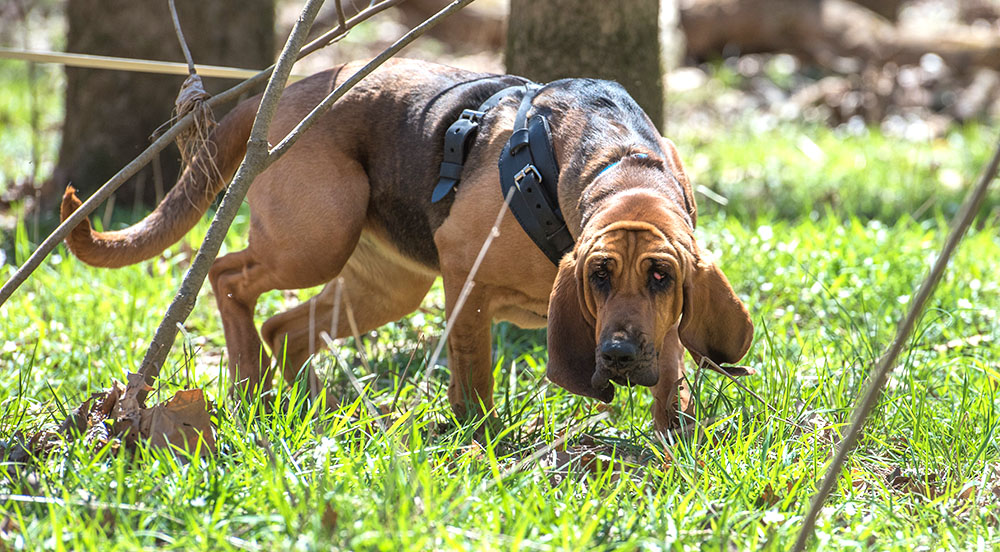Breed Profile – Bloodhound
28/08/2017
The ‘Super Sleuth’ of the canine world, the Bloodhound is famous for their tracking abilities. The latest of our breed profiles uncovers more about this ancient breed with a good nose.
History of Breed: The origins of this scent hound are unclear. It is thought that the Bloodhound breed was developed by the monks of Abbaye de Saint Hubert and can be traced as far back as the 3rd century. The breed could have arrived in England with the Norman Conquest and developed further here. In 19th century Belgium, the Bloodhound was used to save its close cousin, the ‘Chien de St Hubert’ or St Hubert Hound, from extinction. The Bloodhound was originally a leashed, tracking hound, not only for deer and wild boar, but also humans. For this reason, it is particularly popular with police and security teams today.
Life Expectancy: Under 10 years and typically about 7 or 8 years.
Size: Large, with a height range of 58-69cm and a weight range of 36-50kg.
Features: The Bloodhound’s characteristic solemn expression is a result of their long ears, loose lips and soulful eyes. They have an unusually large bone structure, evident in their muscular shoulders and hindquarters. The coat comes in black and tan, liver and tan and red, hanging in loose folds. It is short, dense and weatherproof.
Energy Levels/Exercise Required: Bred to have the stamina to follow a trail to the bitter end, the Bloodhound needs a lot of exercise, typically more than two hours a day. Dog breeds with these energy levels have the energy requirements to match. Choosing a dog food that provides all the nutrition and energy for a large breed is important. In addition to this, owners should look for a large biscuit to suit the larger mouth size. Gilpa Kennel has been specially formulated to cater to large and giant breeds of dog.
Potential Health Problems: Careful monitoring of the eyes, ears and loose folds of skin is essential to catch problems in these areas early. The Bloodhound is also prone to gastrointestinal ailments, in particular bloat, which is common in dogs with deep, well-sprung ribs. Bloodhound owners should familiarise themselves with the symptoms of bloat and seek the advice of a vet at first signs.
Temperament: The Bloodhound may have a tenacious nature when following a scent, but in reality is gentle and mild mannered. It is never aggressive, neither with humans nor with other dogs. The breed is obedient and intelligent, but training needs to be firm. If a Bloodhound decides to follow a scent, not much will stop them, so a firm hand is essential.
Family Dog/Child Friendly: Bloodhounds make great family pets, but do need plenty of room. Therefore they are happiest in a large house with a large outdoor space to run around in. A countryside location or wide open spaces nearby are a bonus. As with all scent hounds, outdoor spaces need to be secure to prevent the Bloodhound escaping to follow a trail.
Likes: Outdoor activity and long walks. Following a scent or trail.
Dislikes: Staying inside for long periods.



